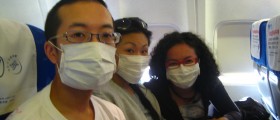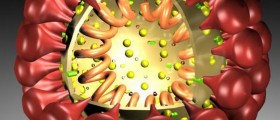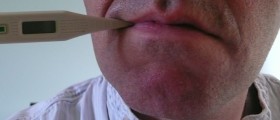
What are coronaviruses?
Coronaviruses are the largest positive strand of RNA viruses known to the scientific world. They can infect and cause disease in both animals (birds and mammals alike) and human beings, and commonly trigger different types of gastrointestinal and respiratory symptoms.
Many coronaviruses, like 229E, NL63, OC43, and HKU1, cause mild or fairly mild illnesses, with symptoms like a mild fever, cough, runny nose, headache, and general feelings of illness and weakness. Some, like the SARS coronavirus and the 2019/2020 novel coronavirus now called Covid-19, can, on the other hand, be more dangerous, causing pneumonia and even death.
When observed in electron micrographs, coronaviruses are characterized by tiny spikes that stick out of the viruses’ surfaces, giving the appearance of a "crown". This is how the viruses got their name.
The structural order of the genes is always the same, and the polymerase is always at the 5’ end. It is closely followed by four distinct types of proteins which can be found in all different types of coronaviruses. These proteins include the nucleocapsid protein, the membrane protein, the envelope protein, and the spike protein. In most cases the S protein, which is the major attachment one, binds to sialic acid. Certain types of coronavirus do not bind to the cialic acid at all. The viral membranes fuse with the cellular membranes so that the virus can further replicate in the cytoplasm of the cells. Each progeny virus contains several types of mutations, and a certain number of deletion mutations are also present in coronaviruses.
Colds and other aspects of coronavirus disease pathogenesis
Coronaviruses are responsible for the onset of numerous different types of enteric and respiratory disease which may affect both animals and humans.
The viruses usually replicate in the epithelial cells of the respiratory tract. In fact, at least one third of all cases of colds are triggered by certain types of coronaviruses. The symptoms of such medical conditions are largely similar to those of colds triggered by rhinoviruses and they include chills, fever, headache, cough, sore throat and runny nose, among othesr.
The incubation time of these viruses is usually no more than three days. The immune response limits the viral spread to a certain degree, but unfortunately such activity is only short-lived. The aforementioned symptoms may be present for several days and their severity may range from person to person, depending on the individual case. Some cases may not involve any noticeable symptoms at all.
The main difference between rhinoviruses and coronaviruses is that coronoviruses are unstable while the former ones are not enveloped. These viruses are transmitted via the transfer of nasal secretions. When the epithelial cells of the enteric tract get infected by coronaviruses, they usually lead to diarrhea.
In most cases, these viruses are local but sometimes they can spread and be held responsible for infections of the inner ear, pneumonia, and myocarditis. In most cases, coronaviruses can be treated quite successfully, but they are also characterized by frequent reinfection. Colds associated with coronaviruses are much more common during the winter because of closer contact involved.
Most cases of coronavirus-induced medical conditions are self-limiting and a large number of cases go completely unnoticed or at least undiagnosed. The proper diagnostic process involves serology and immune electron microscopy. The infections are commonly not treated with any prescribed medications, but a large number of different types of over-the-counter drugs can be of great help when it comes to alleviating the annoying symptoms.
Severe Acute Respiratory Syndrome (SARS)
SARS stands for "severe acute respiratory syndrome". First observed in China in 2002, it caused an outbreak that spread to over 20 countries, infected more than 8,000 people, and claimed 774 lives.
It caused a fever above 100.4 degrees Fahrenheit, aches, general malaise, and headaches. In the initial stages of the condition all the respiratory symptoms are commonly only mild, but after the course of only a few days, the patient usually starts experiencing a dry and nonproductive cough which is also usually accompanied by difficulties in breathing.
Certain laboratory tests have shown that the severe acute respiratory syndrome may be associated with reduced numbers of lymphocytes, increased aminotransferase activity, and significant damage to the liver.
Covid-19 (Wuhan coronavirus)
A novel coronavirus that shares over 70 percent of its genome with the SARS coronavirus was discovered in the city of Wuhan, China, in December 2019. The virus causes fever, cough, and shortness of breath, with symptoms usually appearing two to 14 days after exposure. At the time of this writing (February 27, 2020), Covid-19 was believed to primarily spread through close contact between people, via respiratory drops. Over 82,000 cases were confirmed, with 2,804 deaths and over 32,000 recoveries. The virus reached all continents except Antarctica. Readers can follow the Covid-19 coronavirus outbreak as it unfolds on SteadyHealth.

















Your thoughts on this
Loading...